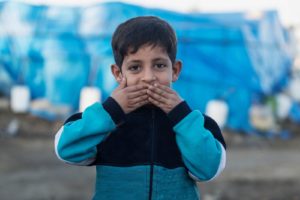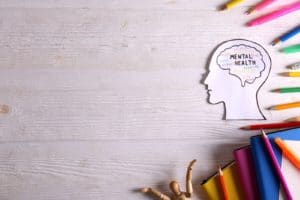During Mental Health Awareness Month, Trudy shared her story of raising multiple children who struggle with mental illness. This is a condensed version of her speech to a gathering of local bloggers.
“Our family is a mess to most people,” Trudy says, “but we are no different from everyone else. We stick together and stand up for one another and for what is good in this world.”
With three kids who suffer from mental illness, Trudy and her husband Toby are setting an amazing example of practical wisdom to help their children succeed and to instill strong values in them.
Mental illness runs in the families of both Trudy and Toby. They knew the probability of having a biological child who struggled with mental illness was high. So, they decided to adopt. Not to run from the possibility of mental illness, but to embrace it. They knew that children who were put up for adoption also had a probability of struggling with mental illness.
“We knew we wanted a big family and that if we had biological kids they would probably struggle with mental illness anyway,” Trudy explains “so why not adopt kids that were already here and needed homes?”
Over time, Trudy and Toby opened their hearts and their homes to four children—three children who were adopted and one of their own. Their diagnoses include depression, ADHD, mood disorder and high-functioning autism.
Trudy has advice for other parents of children who struggle with mental illness.
“We actively listen and tell our kids what we heard them say, and we ask open-ended questions,” Trudy says. “As our children become older we try to ensure they don’t hide their emotions behind yes or no answers.”
Sometimes, though, Trudy and Toby felt they were losing control with their two sons who struggle with ADHD.
“We learned to offer them stimulating and brain-teasing experiences that keep them interested and engaged,” Trudy says. “We take them on discovery walks or scavenger hunts.”
They even allowed one of their sons to take apart the playset and slowly rebuild it into his own creation.
“We work with their diagnosis, not against it,” Trudy explains.
“Our kids know that they are mentally ill and that it is the same as being a Type-2 diabetic,” Trudy continues. “It’s nothing to be ashamed of. It’s just a small part of who they are, but it is not their entire self.”
Trudy admits, however, that it hurts when their children aren’t invited to parties, are talked about in demeaning ways or are bullied.
“In those situations, we try to empower our children and our family as whole,” Trudy says. “We use it to remind them and ourselves that the stigma is there and that we need to be a voice in ending it – now.”
The biggest take-away, according to this family, is becoming part of the solution.
“For us, one more child bullied, one more that commits suicide…is just one too many,” Trudy says.










